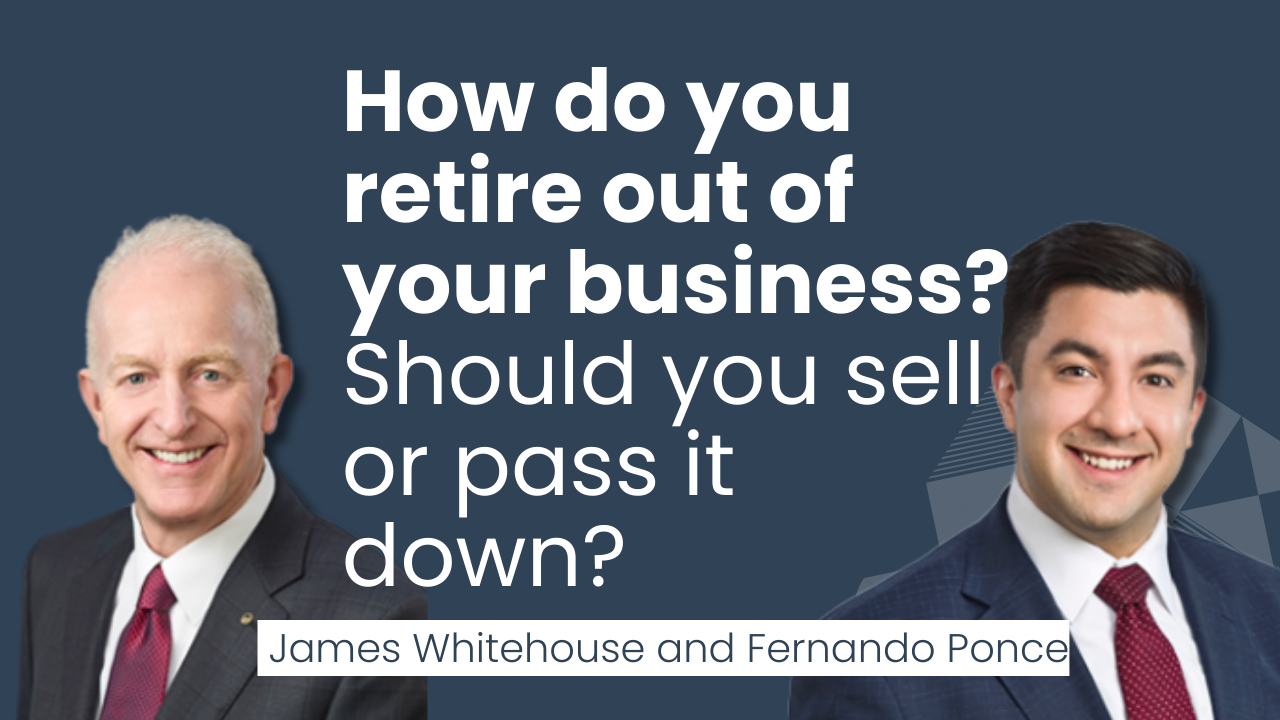How Much Money Do You Need to Retire in Canada? Start With This One Question
April 7, 2025
So, how much money do you need to retire comfortably in Canada?
Is it $1 million? $2 million?
It is one of the most searched questions in the country on the topic of retirement, and one of the most misleading.
The truth is, there is no magic number. The honest answer starts with a more personal and practical question: How much are you spending now?
Is it $1 million? $2 million?
It is one of the most searched questions in the country on the topic of retirement, and one of the most misleading.
The truth is, there is no magic number. The honest answer starts with a more personal and practical question: How much are you spending now?

Step One: Know Your Spending Now
Is your savings target a simple formula?
You’ve probably seen online formulas that say you’ll need 70% of your pre-retirement income, or that you should multiply your annual expenses by 25 to estimate your retirement savings goal. These can be useful starting points—but they’re not a substitute for understanding your spending. Use the basic formula at the end of this article instead.
But first, you need a clear understanding of your current spending habits. That means looking at your actual numbers, not rough estimates.
It doesn’t matter whether you have $200,000 or $4 million saved. Very few people can clearly outline what they spend month to month. Even those with high incomes can struggle to explain where the money goes.
I’ve had couples walk into my office, both earning strong six-figure incomes, and still feel like they’re barely getting ahead. When we sat down and looked at their spending, it became obvious—they simply didn’t know where their money was going each month. Once they tracked this, it was eye-opening.
The first step is to build a budget. Track your expenses over six months and categorize your spending. Identify what costs are likely to continue in retirement and which ones may fall off.
You’ve probably seen online formulas that say you’ll need 70% of your pre-retirement income, or that you should multiply your annual expenses by 25 to estimate your retirement savings goal. These can be useful starting points—but they’re not a substitute for understanding your spending. Use the basic formula at the end of this article instead.
But first, you need a clear understanding of your current spending habits. That means looking at your actual numbers, not rough estimates.
It doesn’t matter whether you have $200,000 or $4 million saved. Very few people can clearly outline what they spend month to month. Even those with high incomes can struggle to explain where the money goes.
I’ve had couples walk into my office, both earning strong six-figure incomes, and still feel like they’re barely getting ahead. When we sat down and looked at their spending, it became obvious—they simply didn’t know where their money was going each month. Once they tracked this, it was eye-opening.
The first step is to build a budget. Track your expenses over six months and categorize your spending. Identify what costs are likely to continue in retirement and which ones may fall off.

Why Retirement Spending Isn't Automatically Lower
Many people assume that they will spend less in retirement. And in some cases, that may be true. You may no longer be commuting, dry-cleaning your wardrobe, or making mortgage payments. The kids are likely out of the house.
But other costs remain, and some can increase. Your interests shift when you have entered a new stage of life. Subscriptions, travel, dining out, hobbies, and everyday purchases can add up quickly. And then there’s inflation. Prices on everything from groceries to streaming services have risen sharply in recent years. Those increases add up.
Inflation has caused my wife and me to reevaluate expenses in our household. One day, I noticed my monthly Netflix charges increased by 30%. It prompted us to review our statements to identify inflation on other fees.
Then we realized we have subscriptions to multiple services — Netflix, Crave, Disney+, Apple TV. These were small monthly fees, but they added up fast. This is unnecessary spending that easily flies under the radar. Unlike inflation, you can control and cancel duplicate expenses.
It is essential to assess your current budget and ask: What will continue in retirement? What can be scaled back? And what do I want to prioritize? The good news is, if you keep your eyes open, there will usually be something you can cut that you likely won’t miss.
But other costs remain, and some can increase. Your interests shift when you have entered a new stage of life. Subscriptions, travel, dining out, hobbies, and everyday purchases can add up quickly. And then there’s inflation. Prices on everything from groceries to streaming services have risen sharply in recent years. Those increases add up.
Inflation has caused my wife and me to reevaluate expenses in our household. One day, I noticed my monthly Netflix charges increased by 30%. It prompted us to review our statements to identify inflation on other fees.
Then we realized we have subscriptions to multiple services — Netflix, Crave, Disney+, Apple TV. These were small monthly fees, but they added up fast. This is unnecessary spending that easily flies under the radar. Unlike inflation, you can control and cancel duplicate expenses.
It is essential to assess your current budget and ask: What will continue in retirement? What can be scaled back? And what do I want to prioritize? The good news is, if you keep your eyes open, there will usually be something you can cut that you likely won’t miss.
The Trap of Liquid Wealth
One of the challenges in identifying a budget for your retirement is this trap: the mistake of viewing your non-working years as a time to become carefree with your time and your cash.
Instead, I advise you to start with a realistic view. A retirement budget for your non-working years protects you from temptation when you suddenly see large balances in your chequing account, TFSA, or investment accounts.
I’ve seen this happen with clients who received a large sum of money and started withdrawing more than they ever spent during their working years. No major vacations or new cars—just small, frequent withdrawals that slowly drained their nest egg. Without their ongoing attention to their retirement budget, it is incredibly easy to overdraw from what looks like “extra funds” in a healthy account.
Your budget permits you to enjoy meaningful, planned extras once you’re sure you can afford them, instead of making emotional or impulsive withdrawals that undermine your stability and fund forgettable moments. Your budget is a forecast for your future spending. Create a structure to stay disciplined when faced with a tempting account balance, and much more free time for entertainment.
Instead, I advise you to start with a realistic view. A retirement budget for your non-working years protects you from temptation when you suddenly see large balances in your chequing account, TFSA, or investment accounts.
I’ve seen this happen with clients who received a large sum of money and started withdrawing more than they ever spent during their working years. No major vacations or new cars—just small, frequent withdrawals that slowly drained their nest egg. Without their ongoing attention to their retirement budget, it is incredibly easy to overdraw from what looks like “extra funds” in a healthy account.
Your budget permits you to enjoy meaningful, planned extras once you’re sure you can afford them, instead of making emotional or impulsive withdrawals that undermine your stability and fund forgettable moments. Your budget is a forecast for your future spending. Create a structure to stay disciplined when faced with a tempting account balance, and much more free time for entertainment.

From Windfall to “Where Did It All Go?”
I've worked with clients who suddenly found themselves with large sums of money—from a pension payout, inheritance, or the sale of a business. Without a budget in place, it is surprisingly easy for that money to disappear.
One couple went from a combined pension and inheritance windfall of more than $3 million to burning through over a third of it in just a few years. No lavish lifestyle, no second homes—just inconsistent budgeting and the belief that the money would last forever. We talked about where it was going, and they genuinely didn’t know.
This is not about judgment. Instead, it is about recognizing the importance of structure, budgeting, and boundaries to protect your future.
One couple went from a combined pension and inheritance windfall of more than $3 million to burning through over a third of it in just a few years. No lavish lifestyle, no second homes—just inconsistent budgeting and the belief that the money would last forever. We talked about where it was going, and they genuinely didn’t know.
This is not about judgment. Instead, it is about recognizing the importance of structure, budgeting, and boundaries to protect your future.
Build a Budget That Works for You
You don’t need to love spreadsheets, but you do need to know your numbers.
Track your spending for a few months. Use receipts, bank statements, or budgeting tools like the YNAB app (You Need A Budget). Break your expenses into categories, and start identifying patterns.
Ask yourself:
When you understand your baseline, you can create a retirement plan that reflects your reality.
- What expenses are essential?
- What could be reduced or eliminated?
- What new costs might arise in retirement, like travel or healthcare?
When you understand your baseline, you can create a retirement plan that reflects your reality.
Plan for 25–30 Years of Retirement
Canadians are living longer. The average life expectancy is now 81 and rising. Even if you think you won’t live that long, your plan should be built to last 25 to 30 years after you stop working.
Running out of money late in life is one of the most significant risks retirees face. Planning conservatively ensures your resources last as long as you do.
I often remind clients that living longer isn’t the problem—it’s outliving your money. Let’s make sure that doesn’t happen.
Running out of money late in life is one of the most significant risks retirees face. Planning conservatively ensures your resources last as long as you do.
I often remind clients that living longer isn’t the problem—it’s outliving your money. Let’s make sure that doesn’t happen.

Calculating What You Need
You’ve built a budget. The next logical question is: how much do I need to save to cover my retirement?
Here’s a simple way to calculate it:
Your total gives you a ballpark figure for how much you may need to support your retirement lifestyle over 30 years.
Keep in mind, this is just a starting point. It doesn’t account for inflation, tax strategies, investment growth, or unexpected expenses—but it shows you the gap between your desired retirement lifestyle and your guaranteed income.
Here’s a simple way to calculate it:
- Estimate your monthly spending in retirement , including essentials and lifestyle expenses.
- Subtract any guaranteed income you expect to receive each month from sources like:
- Canada Pension Plan (CPP)
- Old Age Security (OAS)
- Employer or government pensions
- Any other income source
- The result is the monthly amount you’ll need to fund from personal savings, investments, or assets you will sell.
- Multiply that number by 12 months , and then again by 30 years .
Your total gives you a ballpark figure for how much you may need to support your retirement lifestyle over 30 years.
Keep in mind, this is just a starting point. It doesn’t account for inflation, tax strategies, investment growth, or unexpected expenses—but it shows you the gap between your desired retirement lifestyle and your guaranteed income.
Final Thought: Peace of Mind Comes from a Plan
Retirement isn’t about chasing a perfect number but building a plan that fits your life.
Even people with millions in savings feel anxious about retirement when they don’t have clarity. But when you understand your needs, control your spending, and follow a well-structured plan, you can retire with confidence and stability.
Start with your budget. Then surround yourself with trusted professionals who can guide you through the rest.
If you’d like help figuring out what your retirement could look like, I’m here to talk.
Start with your budget. Then surround yourself with trusted professionals who can guide you through the rest.
If you’d like help figuring out what your retirement could look like, I’m here to talk.
Recent Posts

January 21, 2025
How to Secure a Comfortable Retirement in Canada Planning for retirement is one of the most significant financial journeys you'll take, but it can feel overwhelming without the right guidance. From deciding how much money you'll need to retire comfortably to choosing the best age to leave the workforce, careful planning is essential to achieving financial freedom. This guide explores key topics like creating a retirement budget , managing taxes efficiently, and building a steady income stream that can withstand inflation. You'll also find insights on whether downsizing or relocating is right for you, and how to avoid common pitfalls like overspending or retiring with debt. Retirement isn’t just about numbers—it’s about achieving peace of mind and a lifestyle you enjoy. Whether you’re early in your saving strategy or nearing the golden years, this resource provides actionable advice tailored to the unique challenges Canadians face. Explore strategies to protect your savings from inflation, the psychology behind retirement decisions, and tips to ensure your golden years are financially secure and personally fulfilling










